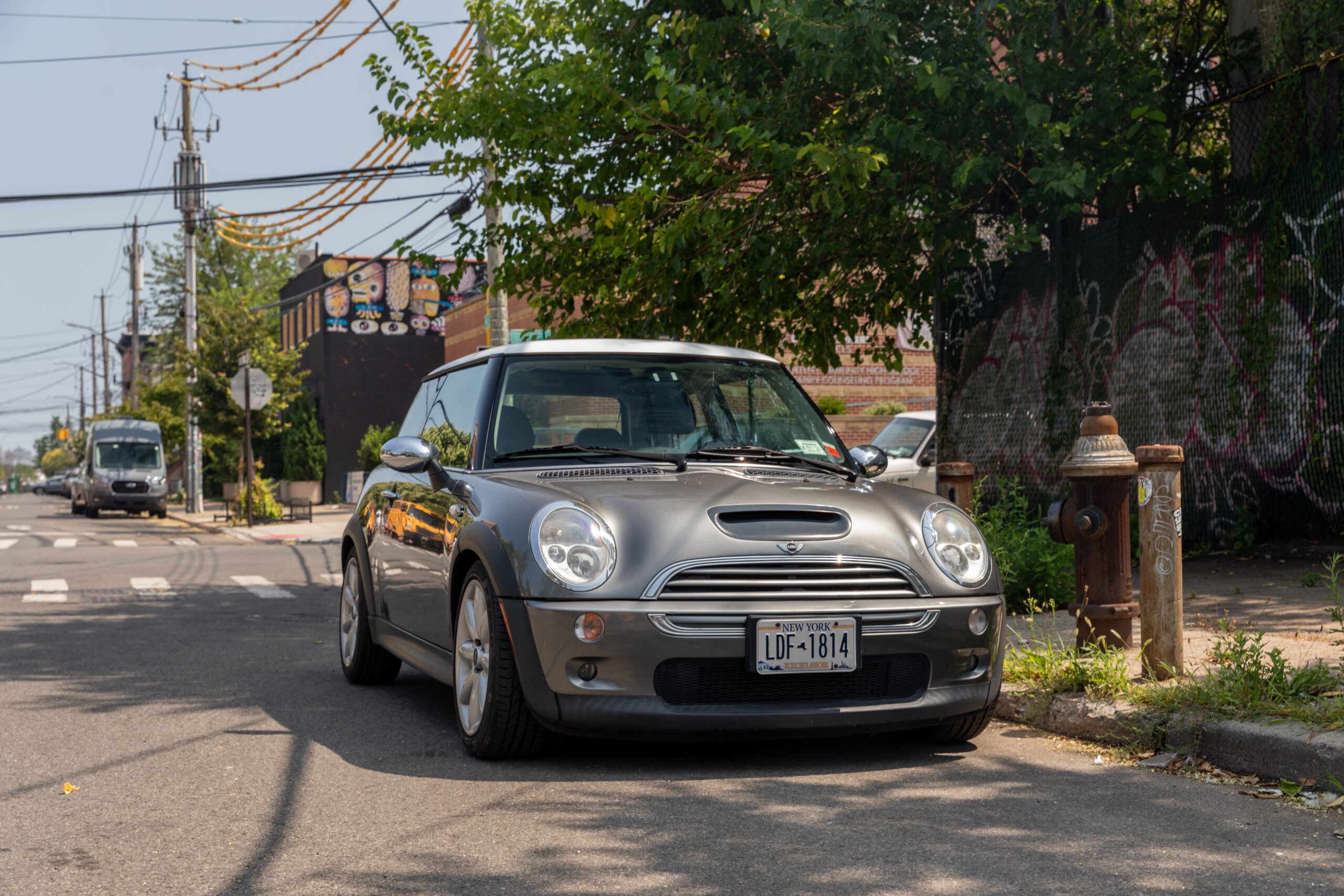Sometimes, the perfect car finds you when you least expect it. As an automotive repair expert and a long-time admirer of the first-generation “new” MINIs, particularly the R53 Cooper S, I recently stumbled upon a clean, manual example parked right on my usual running route. Seeing that “for sale” sign felt like destiny.
After weeks of casually monitoring the car, a text message led to a surprising discovery: the seller was the original owner, and the car had only 51,000 miles on the clock. A quick test drive and a thorough inspection on a lift later, I was the proud owner of this iconic hot hatch. But why an R53 Mini? Let’s delve into what makes this model so special, particularly from a repair and enthusiast viewpoint.
The Enduring Appeal of the R53 MINI Cooper S
BMW’s revival of the Mini brand in the early 2000s brought us several generations, but for many enthusiasts, the first-generation Cooper S, known as the R53, remains the most desirable – excluding the ultra-rare John Cooper Works GP models. Produced between 2002 and 2006 (and until 2008 for the convertible), the R53 boasts timeless design penned by Frank Stephenson, the acclaimed designer behind the McLaren P1. Its looks are as fresh today as when it starred in The Italian Job.
Beyond aesthetics, the R53’s charm lies under the hood. It features the robust 1.6-liter Tritec engine, characterized by its durable iron block and single-overhead-cam design. This engine is not only built to last but also offers excellent tunability, making it a favorite among modifiers. Crucially, for the Cooper S variant, BMW added an Eaton supercharger and an intercooler, boosting power to a claimed 163 horsepower in stock form and delivering that signature supercharger whine that enthusiasts love.
From a maintenance perspective, the R53 engine has another advantage: it’s not a traditional interference engine. This means that if the timing chain guides fail, you’ll likely need a timing job, but not necessarily valve replacements, which can be a much more costly repair. This contrasts sharply with the second-generation R56 Cooper S, which uses a 1.6-liter turbocharged Peugeot-Citroen engine known for issues like oil consumption, timing chain problems, and carbon buildup. While no car is bulletproof, the R53’s engine design generally leads to less catastrophic failures compared to its successor.
While the R53 was somewhat overshadowed in its time by competitors like the Honda Civic Si and Volkswagen GTI, it’s now recognized as a hidden gem. Its combination of a lively supercharged engine, communicative electro-hydraulic steering (with a quick 2.5 turns lock-to-lock), and a lightweight chassis of around 2,500 pounds creates a driving experience that’s closer to the original spirit of the ’80s Golf GTI than many modern hot hatches. Even owning a more prestigious sports car like a 996 Porsche 911, I find myself often enjoying the R53 Mini more in everyday driving, especially in urban environments. The R53 offers instant turn-in, linear power delivery, and that addictive supercharger sound, making every drive enjoyable even at legal speeds. The only minor drawback is the slightly clunky shifter with a longer throw, but thankfully, the extensive aftermarket support for the R53 offers solutions for this and many other aspects.
Addressing Common R53 MINI Issues and Maintenance
Despite my R53’s low mileage, its age is evident. Like any car nearing two decades old, certain maintenance items are to be expected. My Mini shows signs of age with rusty and warped brake rotors from lack of use, and some corrosion on the exhaust hangers. Based on the age and condition of the upper shock mounts, a comprehensive suspension refresh is likely needed. Common areas to inspect on an R53 of this age include engine and power steering pump seals, which can sometimes show leaks. Additionally, like many used cars, mine has a bent wheel and an airbag light – common issues in older vehicles.
Starting with smaller, manageable tasks is a good approach to project cars. I’ve already addressed a cracked A-pillar trim piece and replaced the brittle dipstick. My immediate maintenance priorities include a full fluid flush, brake upgrades, and addressing the exhaust components. For exhaust systems, various aftermarket cat-back options are available to enhance both sound and performance. Following this, suspension work is on the list, aiming for an OEM+ refresh using quality Bilstein parts to maintain a comfortable ride for city driving without lowering the car. Wheel upgrades are also planned, moving to lighter 16-inch wheels with stickier tires for improved handling. Further down the line, a supercharger service and investigation of those mentioned seals will be tackled, possibly utilizing a well-equipped garage space for a more in-depth project.
Future Plans and Enthusiast Community
My long-term goals for the R53 include driving it to the annual MINIs on the Dragon event and participating in the Lime Rock Autocross series. These events, while seemingly distant, provide excellent motivation for ongoing maintenance and upgrades.
The previous owner’s attachment to the car was clear, evidenced by his request for the first right of refusal should I ever sell it. This sentiment underscores the special nature of the R53 MINI Cooper S. Keeping a car running well for two decades is a testament to both the owner’s care and the inherent quality of the vehicle. The R53 is indeed a machine worth preserving and enjoying, and I’m excited to embark on this journey of ownership and maintenance, contributing to its ongoing story. The R53 MINI isn’t just a car; it’s an experience, and one that continues to resonate with driving enthusiasts today.

